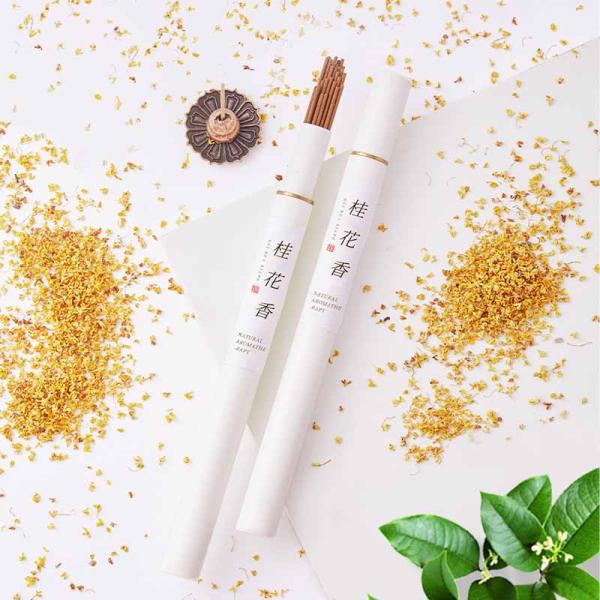

Natural Herbal Ingredients,Meditation Companion,Suitable for Various Occasions
History of Incense Sticks
The use of incense sticks dates back to ancient China. Initially, people burned aromatic herbs during sacrificial ceremonies to honor deities, and monks used fragrant woods to aid concentration during meditation. Over time, incense became an integral part of daily life, widely used in religious rituals, ancestor worship, and to create a pleasant indoor atmosphere. During the Song Dynasty, using incense was considered one of the "Four Scholarly Pursuits," reflecting the cultural appreciation for incense.
Incense and Zen Buddhism
In Zen Buddhist practice, incense is regarded as a "flavor of the Dharma," used to purify the environment and assist practitioners in focusing their minds during meditation. Burning incense creates a tranquil atmosphere conducive to mindfulness and spiritual contemplation. The practice of incense appreciation emphasizes the cultivation of inner peace and concentration, aligning closely with the goals of meditation. Specific scents can aid in relaxation and deepen the meditative experience.
Incense in Modern Healing Practices
In contemporary times, incense has found a place in various healing and wellness practices. Young people, in particular, are turning to methods like meditation, aromatherapy, and yoga to cope with stress and seek emotional balance. These practices often incorporate incense to enhance the sensory experience and promote relaxation.
In summary, incense sticks are not only a traditional cultural artifact with a rich history but also play a significant role in modern spiritual and healing practices, aiding individuals in achieving mental clarity and emotional well-being.
Handmade incense sticks are a refined craft rich in traditional cultural heritage, involving several meticulous steps:
Material Selection → Grinding → Sifting → Blending → Shaping→ Molding → Drying
Material Selection:Choosing high-quality aromatic materials is crucial. Commonly used ingredients include agarwood, sandalwood, and various herbs. Ensuring the purity and fragrance of these materials is essential.
Grinding:The selected materials are ground into fine powders using tools like mortars, pestles, or stone mills to achieve the desired fineness.
Sifting:The ground powders are sifted to remove impurities, ensuring uniformity and purity in the incense mixture.
Blending:Different powders are mixed in precise ratios, and appropriate natural binders (such as plant-based powders) are added. Water is gradually incorporated, and the mixture is kneaded into a cohesive dough.
Shaping:The dough is loaded into a syringe-like tool, and the mixture is extruded to form uniform, slender incense sticks.
Molding:The extruded sticks are shaped to ensure consistent appearance and size.
Drying:The shaped incense sticks are placed in a well-ventilated, shaded area, away from direct sunlight, to dry naturally until completely dry.